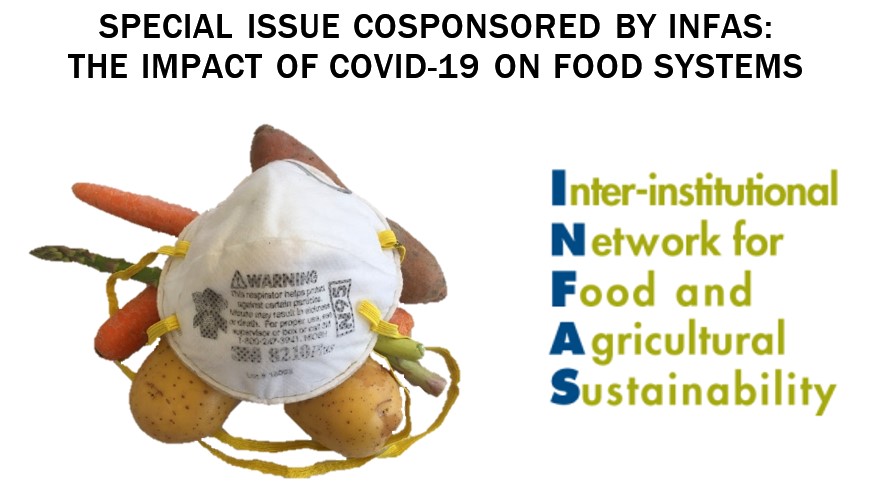Media coverage of a pandemic's impacts on farmers and implications for agricultural resilience and adaptation
DOI:
https://doi.org/10.5304/jafscd.2021.102.039
Keywords:
Adaptation, Buffering Behavior, COVID-19, Pandemic, Farmers, Farming Systems, Impact Pathways, News Media Coverage, Resilience, FramingAbstract
The COVID-19 crisis has revealed weaknesses and placed great stress on the agri-food system in the U.S. Many believe that it could be a catalyst event that leads to structural changes to improve the food system’s resilience. We use a sample of 220 articles published in prominent national newspapers and agricultural trade journals from March to May 2020 to explore the extent to which farmer responses to COVID-19 covered in the media represent examples of resistant, adaptive, or transformative strategies. The pandemic disrupted the U.S. food system and impacted farmers by reducing access to markets, lowering commodity prices, restricting access to farmworker labor, and shifting consumer demand. Media coverage of farmer responses to these stressors were coded into three alternative pathways: (i) reactive or buffering responses, (ii) adaptive responses; and (iii) transformative responses. Most news media coverage focused on the pandemic’s disruptive impacts on the U.S. food system, related negative impacts on farmers, and short-term responses by institutional actors, including policy-makers and food supply chain industry actors. Farmer responses to pandemic stressors were mentioned less frequently than farmer impacts and responses by institutional actors. The most common examples of farmer responses highlighted in the media reflected farmer reactive and buffering behaviors, which were mentioned significantly more frequently than adaptive or transformative responses. National newspapers were more likely to cover farmer responses and present examples of adaptive and transformative strategies compared to agricultural trade journals. Our findings suggest that news media coverage in the early months of the pandemic largely characterized the event as a rapid onset ‘natural’ disaster that created severe negative impacts. Media devoted more attention to short-term policy responses designed to mitigate these impacts than to farmer responses (in general) or to discussion of the deeper structural causes of and potential solutions to the vulnerabilities revealed by the pandemic. In this way, both national newspaper and agricultural trade journal coverage seems to promote frames that reduce the likelihood of the pandemic becoming the seed of a more resilient system.
Metrics

Downloads
Published
How to Cite
Issue
Section
Categories
License
The copyright to all content published in JAFSCD belongs to the author(s). It is licensed as CC BY 4.0. This license determines how you may reprint, copy, distribute, or otherwise share JAFSCD content.













